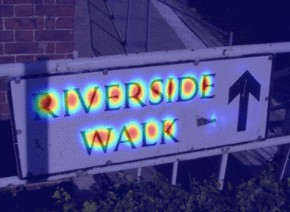Human Image Gender Classifier
This is the official repository of the Human Gender Classifier (Homogenus) used in the paper
Expressive Body Capture: 3D Hands, Face, and Body from a Single Image.
Numerous methods have classified human gender using face images. In full-body images of a person, the face may be small or not visible. Here we trained a classifier to analyze gender based on full-body images. The input to the classifier its a full-body human image and the 2D key points detected by OpenPose. We use information about gender in our SMPLify-X code to select the appropriate 3D body model. Note that gender is non-binary — SMPLify-X has male, female, and neutral body models. When the classifier is certain, we use the corresponding gendered model. When it is uncertain, we use the neutral one. This codebase consists of the inference code.
For further details on the method please refer to the following publication,
Expressive Body Capture: 3D Hands, Face, and Body from a Single Image
G. Pavlakos*, V. Choutas*, N. Ghorbani, T. Bolkart, A. A. A. Osman, D. Tzionas and M. J. Black
Computer Vision and Pattern Recognition (CVPR) 2019, Long Beach, CA
A pdf preprint is also available on the project page.
Installation
The code uses Python 3.7 and is tested on tensorflow-gpu version 1.13.1, tensorboard==1.13.1, with CUDA-10.0 and cuDNN-7.5 running on Ubuntu 18.04.
Setup homogenus Virtual Environment
venv_dir=~/.virtualenvs/homogenus
python3 -m venv $venv_dir --system-site-packages
source $venv_dir/bin/activate
Clone the project and install requirements
git clone https://github.com/nghorbani/homogenus.git
cd homogenus
python setup.py install
Download models
- Download pretrained homogenus weights from the project website, downloads page.
Uncompress the weights in a folder, e.g. by default homogenus/trained_models/tf , and use the directory path in the following commands.
Run Homogenus
After installation and obtaining the weights for the model, inside the virtual environment,
you should be able to run the homogenus_infer command to get the help:
python3 -m homogenus.tf.homogenus_infer -h
usage: homogenus_infer.py [-h] [-tm TRAINED_MODEL_DIR] -ii IMAGES_INDIR -oi
OPENPOSE_INDIR [-io IMAGES_OUTDIR]
[-oo OPENPOSE_OUTDIR]
optional arguments:
-h, --help show this help message and exit
-tm TRAINED_MODEL_DIR, --trained_model_dir TRAINED_MODEL_DIR
The path to the directory holding homogenus trained
models in TF.
-ii IMAGES_INDIR, --images_indir IMAGES_INDIR
Directory of the input images.
-oi OPENPOSE_INDIR, --openpose_indir OPENPOSE_INDIR
Directory of openpose keypoints, e.g. json files.
-io IMAGES_OUTDIR, --images_outdir IMAGES_OUTDIR
Directory to put predicted gender overlays. If not
given, wont produce any overlays.
-oo OPENPOSE_OUTDIR, --openpose_outdir OPENPOSE_OUTDIR
Directory to put the openpose gendered keypoints. If
not given, it will augment the original openpose json
files.
As an example, inside the homogenus folder you can run the following to get the gender predictions for the sample images and their corresponding openpose keypoints.
This command will print the predictions as well as creating new gendered openpose keypoints and gender overlayed images.
python3 -m homogenus.tf.homogenus_infer -ii ./samples/images/ -io ./samples/images_gendered/ -oi ./samples/openpose_keypoints/ -oo ./samples/openpose_keypoints_gendered/
The headline image of this repository shows all these samples from the LSP in-the-wild image dataset with overlayed genders for the OpenPose detected full-body humans.
License
Free for non-commercial and scientific research purposes. By using this code, you acknowledge that you have read the license terms (https://smpl-x.is.tue.mpg.de/license), understand them, and agree to be bound by them. If you do not agree with these terms and conditions, you must not use the code. For commercial use please check the website (https://smpl-x.is.tue.mpg.de/license).
Referencing Homogenus
Please cite the following paper if you use this code directly or indirectly in your research/projects.
@inproceedings{SMPL-X:2019,
title = {Expressive Body Capture: 3D Hands, Face, and Body from a Single Image},
author = {Pavlakos, Georgios and Choutas, Vasileios and Ghorbani, Nima and Bolkart, Timo and Osman, Ahmed A. A. and Tzionas, Dimitrios and Black, Michael J.},
booktitle = {Proceedings IEEE Conf. on Computer Vision and Pattern Recognition (CVPR)},
year = {2019}
}



